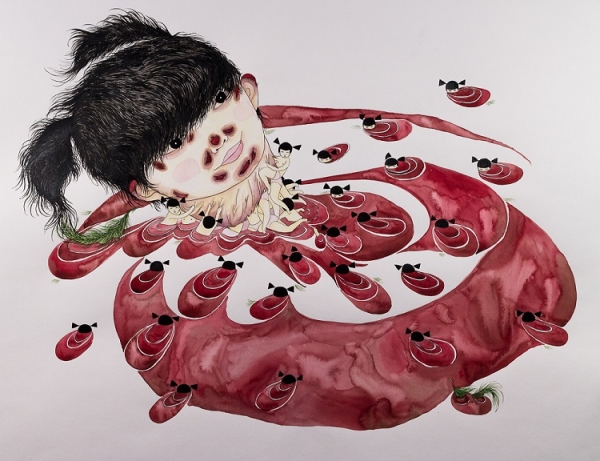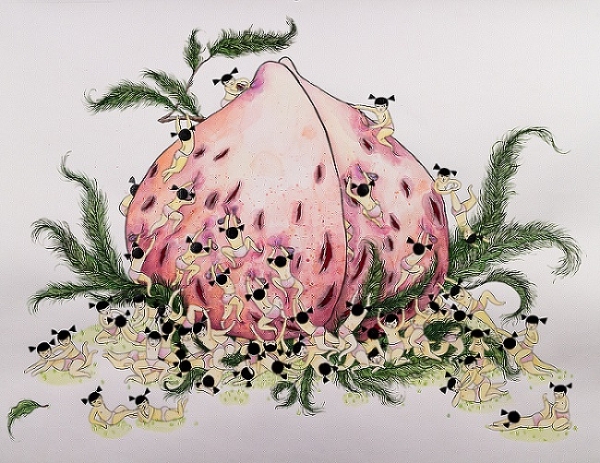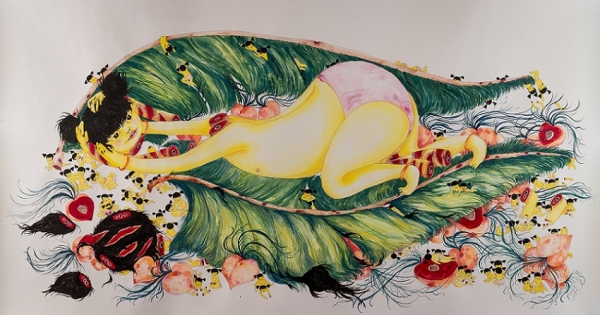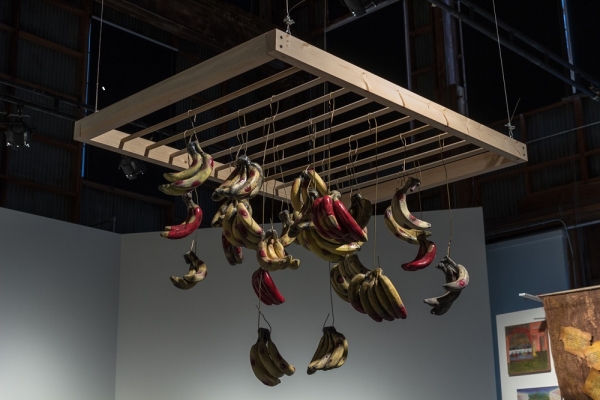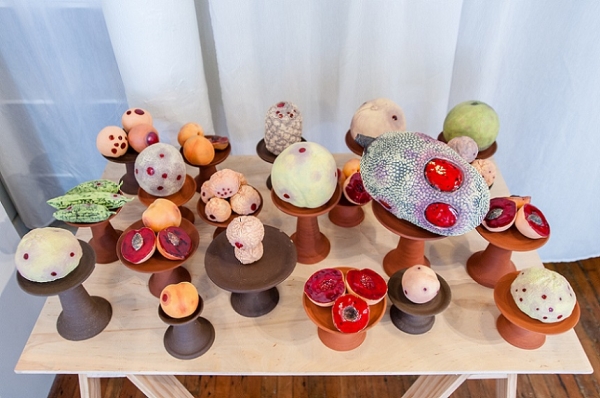Cultural Identity in Art: Interview with Artist Cathy Lu
San Francisco artist Cathy Lu applies traditional Chinese imagery to present modern themes of her trans-cultural identity
This blog post is the first of a series that aims to explore and highlight Asian American culture in San Francisco and the Bay Area by reflecting upon themes related to our ongoing Asian American Now program series. Asian America Now provides an open forum to examine the latest trends, issues, and debates facing the Asian American community today and the topics span arts & culture, business, politics, and society. Check out our past Asian America Now program events at the bottom of our page.
Cathy Lu works across a range of mediums such as ceramics, painting, and sculpture. She uses East Asian imagery to explore the relationship between her cultural history and contemporary identity. Born and raised in Miami, FL, she received her BA+BFA from Tufts University and The School of the Museum of Fine Arts, Boston, in 2007, and her MFA in Sculpture from San Francisco Art Institute in 2010. She has participated in residencies at the Vermont Studio Center, Mudflat Pottery Studio, and Root Division in San Francisco. She currently lives and works in San Francisco, CA.

Your current work mainly explores concepts of identity such as culture and gender. What aspects of your cultural background do you draw the most inspiration from?
I grew up in Miami FL, and growing up within a community that was mostly Cuban exiles and immigrants had a major impact on me. It was strange trying to understand American culture while growing up in a Chinese family and surrounded by Cuban immigrants at the same time.
I’m uncomfortable with the phrase Asian American because I’ve always felt that having been born here, I’m just ‘American’, but I understand that I will never be seen that way. I’ve always been surprised about how people react by the way I look – assuming that I can or can’t speak Chinese or English, or even in the Bay Area. If I’m in Noe Valley washing my clothes at the laundromat, people will sometimes assume I work there.
A lot of my current work involves looking back at Chinese imagery and trying to understand my connection with it. I’ve also been very interested in fruits now. I always remember grocery shopping in Miami; seeing all the Cuban/Latin markets, and then the main supermarkets where you could buy the food you saw in TV commercials, and then driving out past all those markets to the Chinese grocery stores to get the food that my parents liked to eat. So, I see this produce as a connection to a past home/life/place, but also as symbols in Chinese culture, and also just as mundane everyday objects.
The imagery of bruised fruits, fragmented body parts, and children reoccur in many of your paintings and sculptures like in “Girls Playing (Float),” "Girls Playing (Peach)." and “Leaf.” Do these images have significance in the context of culture?
My watercolors are based off of ‘100 Boys Playing’ – a genre in traditional Chinese painting where boys are depicted to be playing with objects to foreshadow their future successes as adults. For example, a boy playing with a quill might grow up to be a scholar; a sword might mean a great warrior, etc. Girls, however, are not represented in this motif. I wanted to give space to girls, so I replaced all the boys with girls. I like to have the girls fragmented physically to portray ideas of multiple identities, and fragmented selves. I’m also interested in ideas of ‘play’ for girls, cultural ideas of boys ‘playing’ versus girls ‘playing’, and the intersection between ‘play’ and violence.
Fruits are also important symbols in Chinese culture and art – representing wealth, prosperity, longevity, or success. I like to show the fruits bruised and bleeding, and like the girls I paint, I’m playing with ideas of what it means to go ‘bad.’
In addition to fruits, you use many other concepts from Chinese art such as black watercolor ink and scrolls as a paper medium like in “Girls in Peach Garden.” What are the implications of using traditional imagery of Chinese art to present modern themes?
I’ve always been interested in these images because of how they are supposed to represent ‘authentic’ Chinese culture and art. Even today, these images are what people think of when they think of Chinese imagery. So these images, even if we understand them to represent a time and ideas no longer current, are still the foundation of how we understand culture and ourselves.
How do you think cultural sensitivity and identity impact the way people perceive and respond to your art?
I definitely think people who are familiar with Chinese art and imagery seem to be able to understand the tropes I’m using. For people not familiar with the imagery, the violence and the humor are what stand out most.
I love when people see my pieces from far away and are just drawn to the 'nice' colors, but then they get closer and are really disturbed by the violent or sexual imagery, and then they begin to question why. People who are familiar with traditional Chinese imagery, or the ‘100 Boys Playing’ genre tend to understand what I'm trying to comment on - about gender and cultural identity, and how disjointed they are. For people not familiar with the imagery or references tend to see anime, the violence, and humor. Either way, questions of why and what the girls are doing stand out for most people.
Click here to visit Cathy's website and learn more about her work.
Featured past ASNC Asian America Now programs:
Faces of Immigration: Undocumented Asians in America
Giving Gap? Connecting Asian-American Philanthropy and Community Needs
The 2012 Race: Asian Americans and the US Presidential Election

